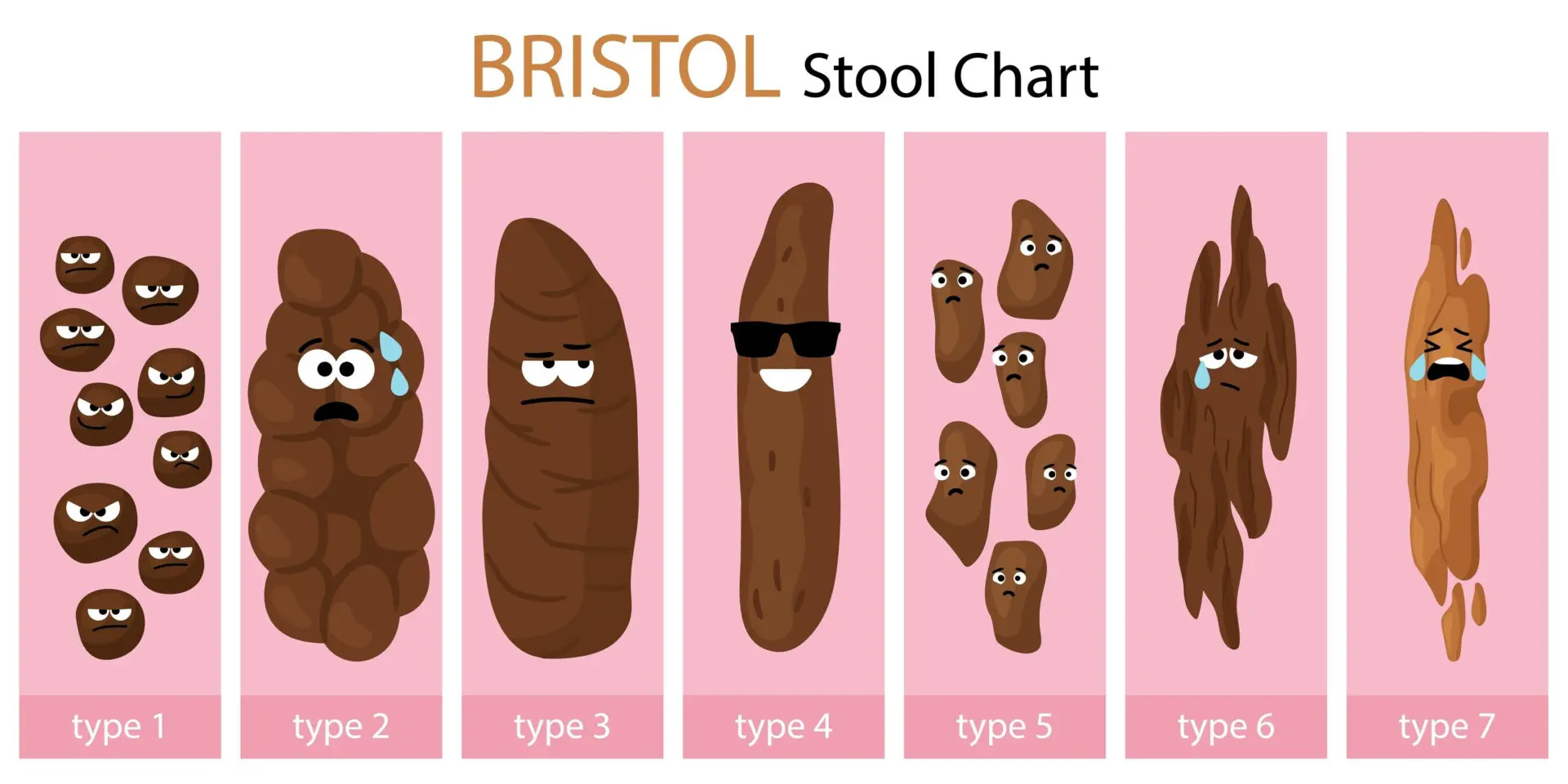
Are you ready to take charge of your health?I help women achieve vibrant health through all phases of life with a personalized, holistic approach.
SIGN UP FOR MY NEWSLETTER AND GET YOUR FREE GIFT:
A SMART WOMAN'S GUIDE TO HORMONE BALANCE

SIGN UP FOR MY NEWSLETTER AND GET YOUR FREE GIFT:
A SMART WOMAN'S GUIDE TO HORMONE BALANCE

In functional medicine, “detox” is more than a buzzword; it’s a sophisticated process involving your body’s natural ability to transform, transport, and eliminate harmful compounds. The detoxification phases work together to convert these compounds into waste products for safe elimination from your body, playing a critical role in your overall health.
The primary organs of detoxification—the liver, gallbladder, and intestines—handle different phases of this process. While the liver initiates detox with Phases 1 and 2, the often-overlooked Phase 3 (transport and elimination) is just as essential to ensure a complete detox. Let’s dive into the details of each phase and why they matter for holistic health.
Phase 1 detoxification focuses on transforming harmful compounds. It uses a group of enzymes known as cytochrome P450, which break down toxins into smaller components. The key roles of Phase 1 include:
Caution: Phase 1 produces byproducts, including free radicals that can be harmful if not neutralized in Phase 2. This makes a well-functioning Phase 2 essential for preventing cellular damage.
Phase 2 is where the body prepares harmful byproducts from Phase 1 for safe removal. This process requires energy and essential nutrients to neutralize unstable metabolites. Six major pathways drive Phase 2 detoxification: glucuronidation, acetylation, methylation, amino acid conjugation, sulfation, and glutathione conjugation.
Each pathway needs specific nutrients:
To support Phase 2, your diet should include a variety of colorful fruits and vegetables, protein for essential amino acids, sulfur-rich foods, and high-quality omega-3 and omega-6 fatty acids. This helps ensure that Phase 2 runs smoothly, balancing out Phase 1 by effectively neutralizing potential toxins. For specific foods, read my article Liver Detoxification: Understanding the Power of Food.
Phase 3 finalizes detoxification by transporting conjugated toxins through bile to the intestines for elimination via stool. This stage is vital—without efficient transportation and elimination, toxins can remain in your body and potentially be reabsorbed.
For effective Phase 3 detox:

Imagine detoxification as a bathtub with a leaky faucet (Phase 1), a drain (Phase 2), and a sewer line (Phase 3). If the sewer line clogs, water backs up—just like toxins backing up in your body if Phase 3 is inefficient. This analogy shows why Phase 3 is so important and should be prioritized to avoid toxin buildup.
Imbalances between Phases 1 and 2 are common and can lead to inefficient detoxification. Here’s why:
A well-designed functional medicine detox program considers these dynamics, supporting all three phases with targeted nutrients and lifestyle strategies. This holistic approach helps balance the liver, gallbladder, and intestines for efficient detoxification and sustained wellness.
Are you ready to support your health with a personalized detox program? I offer custom detox plans to address your unique needs, helping you achieve better health, energy, and vitality. Contact me today to begin your detox journey, or consider joining my next annual January 1-2-3 Functional Detox Program to give your body a fresh start for the new year!

Dr. Laura Paris is a women’s health specialist who provides Acupuncture and Functional Medicine care at her two clinics in Capitola and Monterey, California. She also works with women remotely in the United States through telehealth appointments. Learn more about Laura here, and message her directly here.
Click the button to talk to Dr Laura on a 20-minute discovery phone call ($67)
Thank you Laura for this very informative and important post. It really is important to make sure your body has the nutritional support it needs while detoxing. I have a close friend that put herself in the hospital because she was doing ‘The Master Cleanse’ for 2 and a half weeks. At that point her body just started shutting down because she was malnourished.
That was 30 months ago and she is still not recovered.
I wrote an article about toxicity and detoxing and linked to this article to help explain the phases of detoxing.
Thank you!
Hi Laura,
Can you tell me please why grapefruit isn’t a suitable food to eat in Phase 1? Other websites seem to approve of it.
Sure! If you want to activate phase 1, then grapefruit will not help. Grapefruit inhibits phase 1. That’s why it can increase the level of prescription medications in your bloodstream, because it prevents your liver from metabolizing them. However, if phase 2 or 3 is sluggish (common), then it may be beneficial to slow down phase 1 with grapefruit, instead of ramping it up with coffee or alcohol. Ideally, with a well functioning phase 2 and 3, grapefruit is not a problem and the bioflavonoids are beneficial. However, of the 3 phases, it’s much more common that 2 and 3 are sluggish rather than 1. If you’re going to drink alcohol, perhaps a vodka with fresh grapefruit juice (greyhound) would be a good choice as alcohol revs up phase 1 and grapefruit slows it down. Not that I am encouraging that!
How do you remedy chronic body odor? It isn’t a hygiene issue it’s an internal issue. How would one go about healing that? Need help asap please.
[…] Toxins are oxidized in this step, and can become more harmful than the original toxin. Read more about phase 1 detoxification at Paris Healing Arts. […]
[…] Functional Medicine Explains Detox Phases 1, 2 And 3 […]
Hi there, this was very informative. I have done several stool tests all which have shown very high levels of b-glucuronidase around 5300U/g just wondering what I can do for this, I suffer from insomnia. I eat super clean and haven been taking a b12 spray and calcium d-gluconate. Quite concerned by this but none has been able to assist me. Any input would be greatly appreciated. Thanks
Glenn,
I can’t give personal medical advice here. Please discuss with your medical provider.
Best,
Laura
Shouldn’t the “goal” stools be three and four, not four and five?
Really the goal is 4. 3 and 5 are both close, but 4 is the goal.
Thank you so much for such an amazing informative content. how long should I do phase 1 only before I start phase 2. or they should be done all at the same time?
Maryam I cannot advise you personally without knowing you. I am planning a guided detox for March though, if you’re interested.
Thank you so much for writing this! I have CBS which makes tolerating sulfur very difficult for me. I have dealt with many symptoms because of this issue… But I also have MTHFR and MTRR. It gets so confusing! Anyway, I am curious to know if There is ever a reason to slow down phase 2 and speed up phase 1? So many of my sulfur-based metabolites are through the roof high, like taurine. I wonder if slowing down phase 2 and somehow speeding up phase one will give me better results? Or maybe my thinking is totally backwards! But having excess ammonia due to CBS and all of the issues that present with MTHFR… Does one speed up methylation or slow it down? Of course, I would appreciate any theoretical answer… Not expecting medical advice by any means!
I never recommend trying to speed up or slow down methylation. It’s too complicated and we don’t know long term effects. I do recommend supporting methylation to self regulate with diet primarily. Kara Fitzgerald has an excellent ebook for this.
“However, if you take large supplemental doses of these antioxidants every single day, you run the risk of shutting down the production of your own master antioxidant, and hands down THE most important one: glutathione.”
Which antioxidants, in what amounts, how and why do they shut down glutathione production? I have tried searching the internet but can find no reference to this. What do you base this argument on?
Hello, thank you for your question. This is based on clinical data. When people take large amounts of any antioxidants, if all reactive oxygen species (ROS) are brought down to a very low level, then your body is not signalled to make as much glutathione. However, the glutathione that you make works far better than antioxidants taken in high doses. I don’t have information about specific antioxidants and their levels. Think of this as a situation when high doses of a supplement over a long period of time can put your own physiology out of balance.
Please tell me how to help mold toxicity and chemicalsensitivity..I’m very toxic and skin burns and metal taste and eyes burn andbrain
This isn’t something that can be answered on a website. You need to work with a practitioner who is skilled with these issues.
Bristol Chart link not working :/
Fixed, thank you!
Hi Laura,
Would you recommend speeding up phase 1 or phase 2 to help with caffeine elimination? The caffeine in my one morning coffee lingers for a very long time in my body, and has a detrimental effect on my sleep. Do you think milk thistle is helpful for this issue?
Thanks.
Honestly for this I would cut out the caffeine.
Great information, thank you for putting this together! But, your link to part 2 seems to be broken.
Thank you! Hm, the link is working on our end. Try again?
Nope. Still getting a 404. When I try from either link (top or bottom). Not sure why.
Thank you!
Is it possible to do this intentionally by say giving a lipotropic injection followed by glutathione and exercise followed by infrared sauna and binders? And if so what is the timing between phases? There is the old niacin flush, but I’d like skip the flushing part.
Thank you Laura. I’m a Functional Diagnostic Nutrition Practitioner, specifically helping people ditch gut pain and auto-immune flare ups, so I’m somewhat familiar with these detox process, but I’m curious about alcohol detox pathways. Specifically, I seem to have zero tolerance for any alcohol whatsoever .. one margarita, one glass of wine and I’m either in pain, fall asleep, heart palpitations and likely hungover. So .. I am wondering if there is a specific phase 2 or 3 pathway that might be malfunctioning and where I might be able to find more info on this and dig into it deeper.
I appreciate any insight you have.
Does schizandra take you through all 3 detox phases?
Thanks
Not that I know of, but if you research it and find otherwise please report back!
What about someone who is COMT++ ?
How do we know the difference between:
Slow phase 1 vs fast phase 1? Aren’t some of us fast in Phase 1? Do we really want to speed up phase 1? (And if we got slow phase 2 we got a double whammy?!)
Slow cytochrome p450 and Glutathione S-Transferase Genes?
https://www.psychologytoday.com/us/blog/click-here-happiness/202001/are-your-genes-responsible-your-unhappiness
I’m trying to understand where i really sit with these. I have some good clues (do horrible on coffee, can eliminate anesthesia very fast, have 4 genes that are worse for detoxing mold, have COMT++ and VDR Tak, some CBS defects and others.
I don’t want to speed up phase 1 when i should not.
There is inaccurate information in this article. Milk Thistle does not activate Phase 1. It inhibits Phase 1 and induces Phase 2.
Thanks for this Martin. This was written 5 years ago and I can see that the information about how milk thistle can help support phase 1 was written inaccurately as it can inhibit phase 1 enzymes in vivo. I removed that part and put on on my list to update this post soon, and milk thistle deserves its own article. Thanks again,
Laura
Hey there Laura! I’d love to pick your brain on something to see if you have come up with anything surrounding phase 2 issues and sulfur intolerance. I am a practitioner also, and I am stumbling upon this, finding very little information that discusses these two as a whole! Phase 2 needs Sulfur. It is one of the biggest parts of that process. I am finding it really difficult to get that back in check after going through a few traumatic things that sent my body into a few chemical sensitivities. I’ve been able to rebuild it quite a bit and get back to a fairly good space with minimal sulfur intake, however if I over do it in the smallest way, it sends me into symptoms that are not pretty. It has caused estrogen dominance and a few other symptoms because of not having that Phase 2 working optimally. Again, I’ve been able to get a few things back in check but not in the ways I know I can. It’s funny that so many practitioners I talk with are stumped by this too, so I figured I’d ask since I came across your article. Hope you are well and thanks in advance! 😁
I am happy to work with you on this, but this is a 1:1 project not suitable for website comments. Hope you understand!
Thank you for this simple and informative description of the phases, a great tool! I am very curious about how menstruation relates to these phases of detox – does it trigger more of phase 1, therefore focus on phase 2 and 3 more in this time? Or is it more of a phase 2 where I could stimulate phase 1 prior to maximize the detox potential? Not finding any information about this, what do you think?
Helena, that’s an interesting question! To my knowledge menstruation does not up-regulate or down-regulate phase 1 or 2, although it can speed up phase 3 (elimination) for some.
Hi Laura,
Excellent article on Phase 1, 2 and 3.
As a practitioner, I learned about this years ago and struggled to come up with a meaningful game plan for myself back then as the indications were that I had problems with both 1 and 2, which were later confirmed by an Epigenetic DNA test.
I have found that MSM works well for me and my clients, those of us not inclined to a high sulfur food diet. Also discovered at one point that periodically consuming half a bottle of Kyolic liquid odorless garlic over two days left me feeling awesome. Now I understand why😊
Thanks for stopping by and for the tips!
I was diagnosed with alcoholic fatty liver disease 4 years ago and it absolutely terrified me. The doctors made it sound like a death sentence and it hit me hard. My life changed dramatically and I suffered terribly.
Thanks to a website I lost weight and my liver function improved beyond belief. I feel more energized, happier and the transformation in my health has been nothing short of a miracle. I not only feel 100 times better, but I barely need to take any insulin at all anymore.
Hi Laura, I am struggling and can’t get back on track and here I find no one to work with on opening the detox L pathways … I have oxalates, histamine and I believe salicylate intolerance… so I can’t use plants or row vegetables…I have to do rapid something because the toxins are recirculating in bloodstream and I’m brain foggy, dizzy and nauseous plus inflammation especially on the back of my neck towards small cerebellum …
It is possible to work one on one?
Thanks
Adina
Yes we do work with patients one on one, in the U.S.
Hi Laura,
I have been reading a lot of your articles on your website, I came across this article I believe trying to find out more about the 3 detox pathways of the liver. I have been doing a pathogen / parasite cleanse for several months but my skin rashes have been getting worse. I don’t know if I am detoxing too much or my liver is having problems – ie, they are not all in sync and timing. I eat a lot of the foods you suggest in these and some other articles. I have had some lymph drainage issues as well so I don’t know if that is the problem. I guess my question is should there be a process or cleanse to focus on each phase for awhile or eating the foods and supplements you suggest would help? Do you have any guess on why I am having these rashes?
With this program I am on for the parasites, they are starting a liver / gallbladder class but it is focused more on gallbladder stones and liver flukes, etc, I’m not sure how much detail they will go into the pathways, so I thought I would ask you.
Thanks
Hi Isabella, thank you for your comment and questions. I’m glad you are benefiting from the articles. Unfortunately I can’t troubleshoot your symptoms here, without digging into your case as a patient. I hope you understand. Best on your healing journey. Warmly, Laura